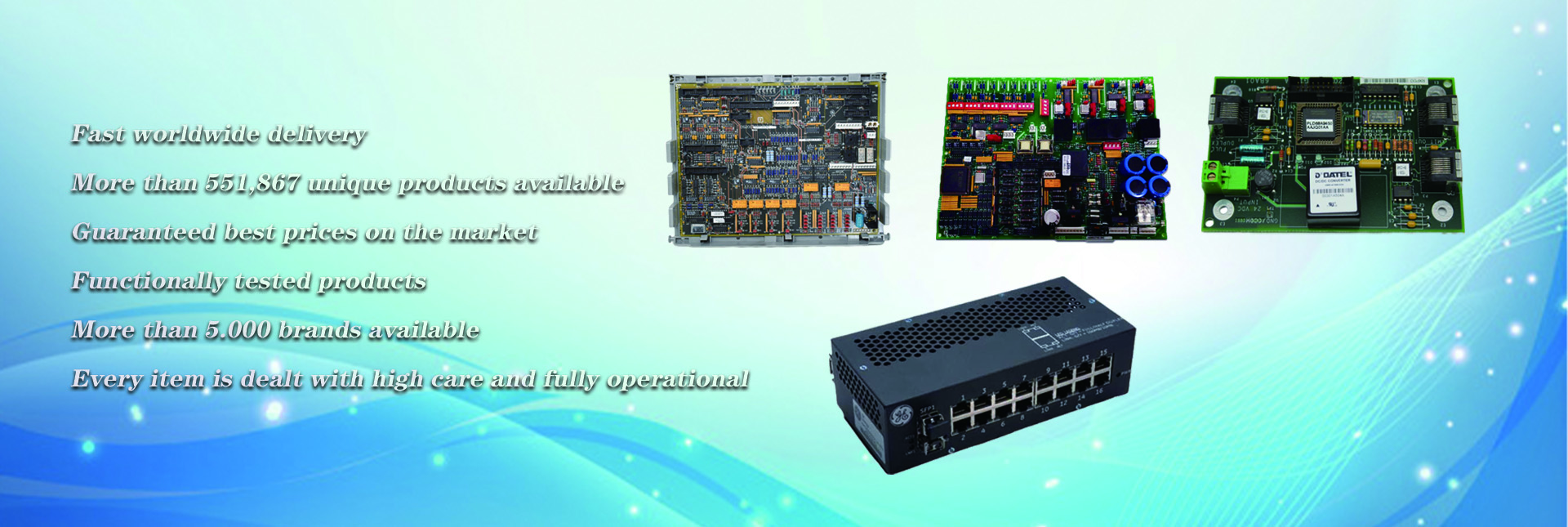Practice has proved that most of the failures of PLC products are caused in the manufacturing process. In the manufacturing process, the most important thing to ensure the reliability and stability of products is product testing. Only through complete and comprehensive testing can problems in products be found and solved. From the manufacturing process, PLC product testing can be divided into four parts:
The first is the testing of components, including the testing of outsourced parts.
At this time, most of them adopt the sampling method. In fact, before purchasing, the qualification of suppliers should be recognized. It is necessary to avoid non-standard component suppliers and establish a long-term relationship with qualified suppliers. In this way, it can ensure that incoming components will not have major problems at all.
However, even for long-term regular suppliers, inspection before warehousing is required. Generally, visual inspection is required first, including quantity list, model check, batch number and production date. Then, sample the components; Due to the high quality requirements of PLC, the sampling proportion should be increased as much as possible, so as to increase the probability of finding faulty components.
The second step is to conduct QC test for each production and processing procedure during the production process.
For the production of PLC, it is mainly the testing of circuit boards, usually including silk screen, patch, reflow welding, wave soldering, manual plug-in and welding. At this time, it is better to make a special test rack for each process of each module to ensure that the quality of each module can be measured efficiently and accurately. In the manufacturing process, once quality problems are found, the cause should be found out immediately, whether it is due to the component itself or the processing quality. In case of the latter, the working parameters of the production equipment shall be adjusted in time after the occurrence of a relatively large proportion of failures, such as faulty soldering, to ensure the production speed and productivity as well as reduce the failure rate. If the PLC manufacturer has its own production line, the best production state parameters of each module should be saved, and each time the same module is produced in the future, the production can be carried out according to the best state. Moreover, this optimal production status parameter should be updated constantly.
The third step is to conduct the performance test of the module after the assembly is completed.
After manufacturing, it is the assembly of modules. The test in this step is very critical, because the most important performance test is in this link. Since there are usually many parameters to be tested for various PLC modules, it is necessary to make a special test rack for each module of each model, and use automatic test tooling, so that the test parameters can be comprehensive and complete, and the test productivity can be guaranteed. Finally, the module shall be sent to the aging chamber for high temperature aging. Test after aging
Many people confuse aging with high temperature testing. In fact, this is completely different. The high temperature test of the product is mainly to detect that the product can work normally in the designed high temperature working section. For example, if the working temperature of the PLC is 55 ° C, then as long as the machine is started within the range of 55 ° C for working test, after the temperature in the module reaches stability (usually about half an hour), it is OK. However, aging is a completely different concept. The components of each product have a certain life cycle. For example, the life of electronic components is 10 years. In this life cycle, the failure rate in the first three months is very high, and then the failure rate will become lower and lower. After three months, the failure rate will drop to a relatively low level when it reaches a stable level. Until about 10 years, the components reach their life, and the failure rate starts to rise again. Aging in the production process is to shorten the time with high failure rate in the early stage of the product through high temperature operation, so that the product will pass this stage before leaving the factory and enter the low failure rate stage. The aging temperature and time are related to different types of products. For electronic products, if the temperature is set at 55~60 degrees, the time of early high failure rate can be shortened from three months to about three days. This is why the aging time of many electronic products is 72 hours. Therefore, aging is an important process in the production process of PLC products, not just a testing process. Knowing the above, we will also understand that the aging process of products is very important, and the testing after aging is even more important. Because most potential faults of modules prone to failure will be exposed during aging, the aging products must be strictly tested. The test method and means are similar to those of the module before aging, but they must be completely tested. Some testers think that the product has been tested once, so they tend to relax the testing of aging products. In fact, this is a big mistake.
The above four steps are the introduction of PLC hardware test. Since the software is also an important part of PLC, the internal software of PLC should also be tested. Generally, due to product confidentiality, even for outsourced modules, the company’s key software must be installed inside the company, and relevant testing functions must also be completed inside the company. Related software function test can be divided into bottom embedded software test and programming software test. The bottom embedded software refers to the system software of PLC, that is, the embedded solidified software (FIRMWARE) in the CPU module of the product. In the CPU module of the industrial control system, there is an IC chip, which is the solidified system software of the CPU. It is commonly called SOC (System On Chip), which is the core of the controller. There are mainly two ways to realize SOC: ASIC and FPGA. At present, the main embedded software of DEVSON is solidified by FPGA technology, so here we only briefly introduce the test flow of FPGA chip. When testing the chips in the manufacturing process, first of all, the raw material inspection of FPGA chips should be entrusted to the supplier, and the company should conduct a sampling inspection once a month to ensure that the quality of the chips themselves is no problem; At the same time, the software to be embedded must have passed the FPGA sample debugging and the function has been qualified. The chip first writes the software through the chip writer, and then the tester inserts the chip into the test circuit. The logic analyzer is used to perform logic analysis and test on the pre specified pin waveform of the chip. In order to ensure that the chip can be 100% tested, this step only tests the waveforms of several key points. After the logic test is completed, the electrical performance of the chip is tested. This step mainly tests the high and low limits of the working voltage of the chip and the automatic recovery performance. After the electrical performance test is completed, start the aging test of the chip. After aging, carry out a logic analysis test again, and select at least 5% of the chips for comprehensive performance test, mainly to observe the software functions of the chips for reference in design modification. The testing of product programming software is usually not in the manufacturing process. I will describe it in the product application process testing. The above manufacturing process tests mainly refer to performance tests. In addition, special reliability test shall be carried out for PLC products. The reliability test of products includes environmental test, mechanical performance test and electrical performance test. Mechanical performance test is mainly to test the mechanical integrity of product packaging, including the firmness of welding points, the precision of molds, and the firmness of wiring terminals. The environmental test mainly tests the durability (or service life, usually calculated in terms of MTBF) of products stored and used under harsh conditions. The electrical performance test is used to verify whether the product can withstand the test of various electrical environments in the environment to be used. According to relevant national regulations, reliability test (including EMC, vibration and impact test, dust test, etc.) can be conducted in an authoritative professional testing agency after the first batch of samples of each product is produced, and then it can be submitted to a government professional testing center once a year. The company only conducts pressure resistance and high and low temperature aging tests for products internally, and does not need to conduct reliability tests for each batch of each product. Environmental tests include high temperature, low temperature, salt fog, dust, flammable and explosive gases, humidity, altitude tests, etc; Mechanical property test includes vibration, impact, acceleration stress, etc; Electrical performance test includes EMC electromagnetic compatibility test (including radiation characteristics, static electricity, group pulse, etc.), contact test (mainly for switching value input and output modules), voltage withstand test, etc. The products submitted for inspection are randomly sampled, usually two sets.
Post time: Jan-04-2023


